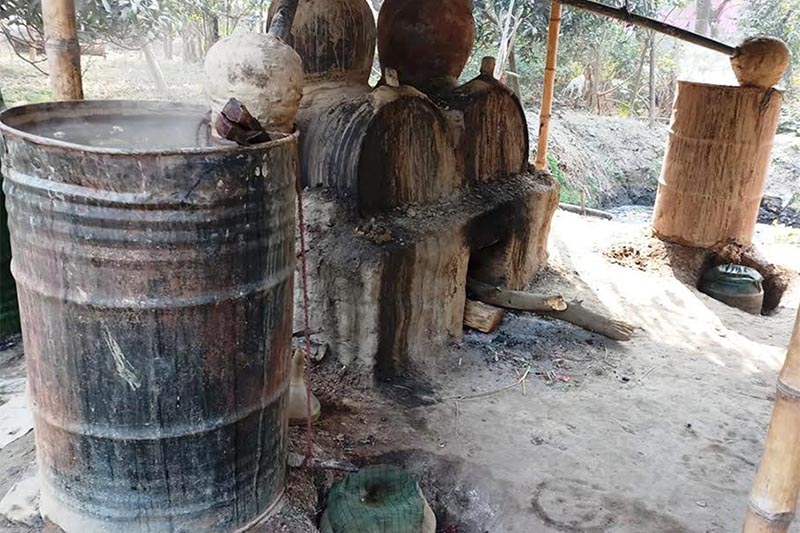Preventing methanol poisoning
We have been hearing news about deaths after consumption of toxic alcohol time and again. In mid March, there were around 21 deaths in Dhanusha, Janakpur due to consumption of toxic alcohol. Recently, poisonous liquor consumption killed 12 in Mahottari, also in province 2. Could it have been methanol poisoning?
Methanol, also known as methyl alcohol, wood alcohol, wood spirits, is a widely available chemical. It is used in everyday products like plastic, paints, cosmetics and fuel. According to the World Health Organisation report, in 2015-2016, approximately 57 per cent of the world’s population over the age of 15 consumed alcohol.
Outbreaks of methanol poisoning occur when methanol is added to illicitly- or informally-produced alcoholic drinks. In the recent years, there have been numerous methanol poisoning outbreaks in different parts of the world. The size of these outbreaks has ranged from 20 to over 800 victims, with case fatality rates of over 30 per cent in some instances.
Methanol poisoning is a global public health issue that has received little focus. The population at risk of methanol poisoning could be people with low incomes because unregulated alcoholic drinks are generally very cheap and are, therefore, an attractive option to these people.
Methanol poisoning victims often only seek medical care after significant delay, mainly because there is a latent period between ingestion and toxic effects. Late medical care contributes to high morbidity and mortality levels seen in many methanol poisoning outbreaks.
Features of methanol toxicity include drowsiness, unsteadiness and disinhibition in the first few hours of consumption followed by headache, vomiting, abdominal pain, heavy chest pain, breathlessness and brain damage after a variable period of time. Vision is often affected, with blindness in severe cases. Death of the victim may occur from respiratory arrest.
Methanol poisoning can be treated if diagnosed within 10 to 30 hours of ingestion. The treatment modalities include fomepizole, high doses of ethanol and other supportive care. The preferred antidote, fomepizole, is not readily available, and the current price makes it unattainable for most victims in high-risk countries where people are affected. Fomepizole is registered in Nepal, but it is not available, which could be due to the high cost.
Prevention of methanol poisoning should start at the individual level by refraining from purchasing or producing illegal alcoholic drinks. The individuals should be well aware of methanol toxicity and seek medical attention immediately.
Public awareness of the dangers of informally produced and illicit alcoholic drinks is one of the most effective ways to prevent and control methanol poisoning. Medical professionals should be well trained in the diagnosis and management of methanol poisoning as this is vital in early recognition of an outbreak and improvement of outcome.
A national strategy and legal framework to reduce the harmful use of alcohol should be put in place. The government should bring regulations regarding illegal sale of such substances and also impose penalties on those who break the rules.






